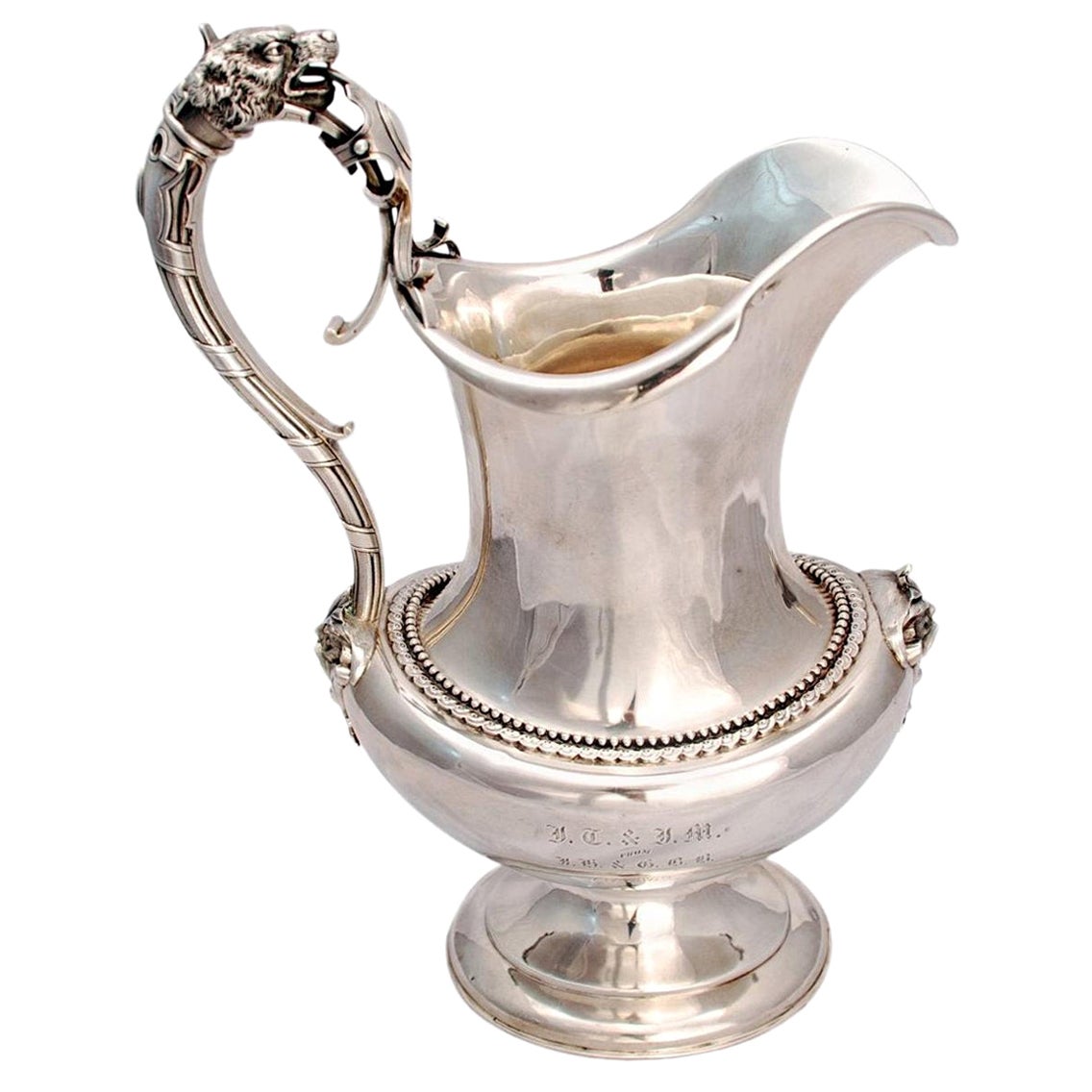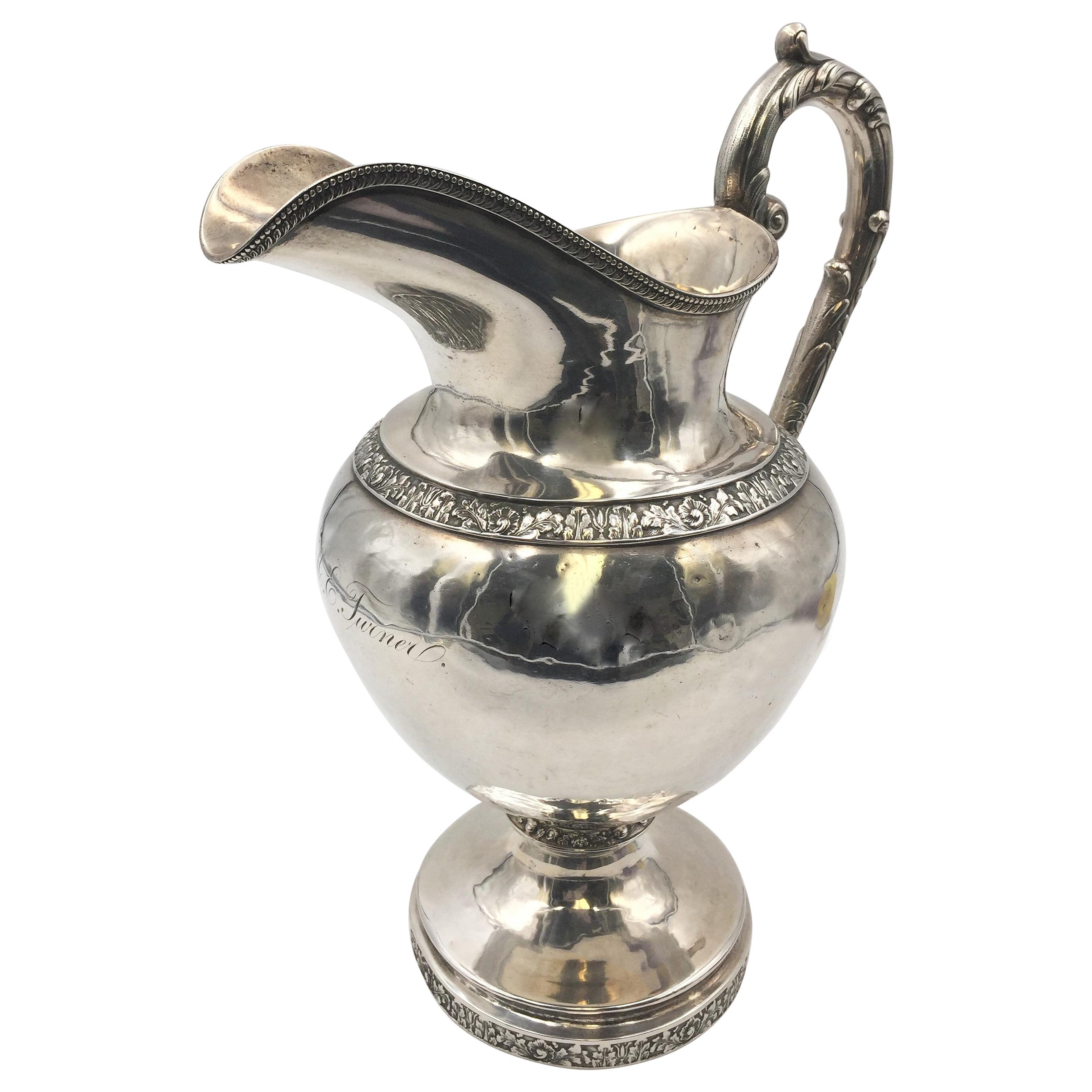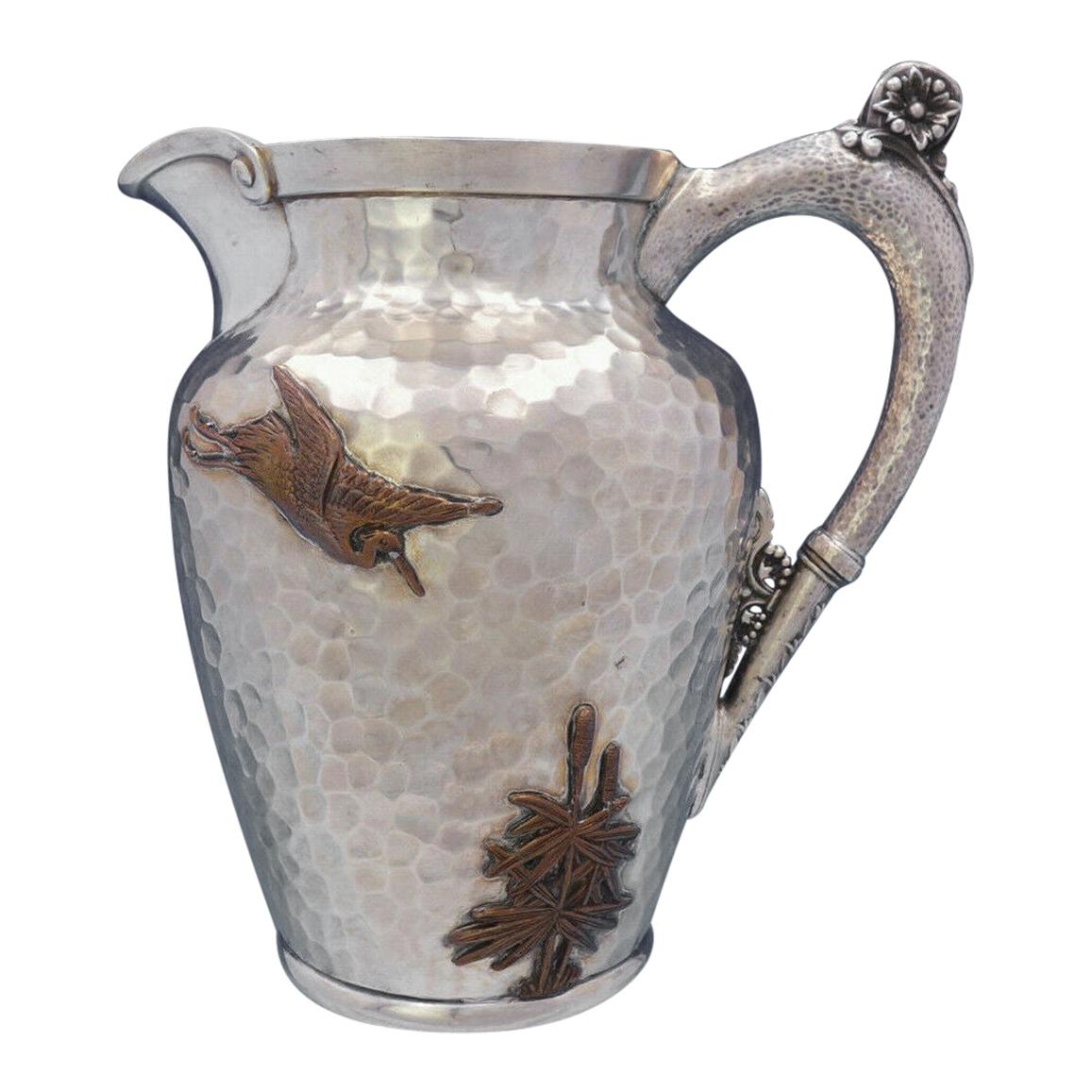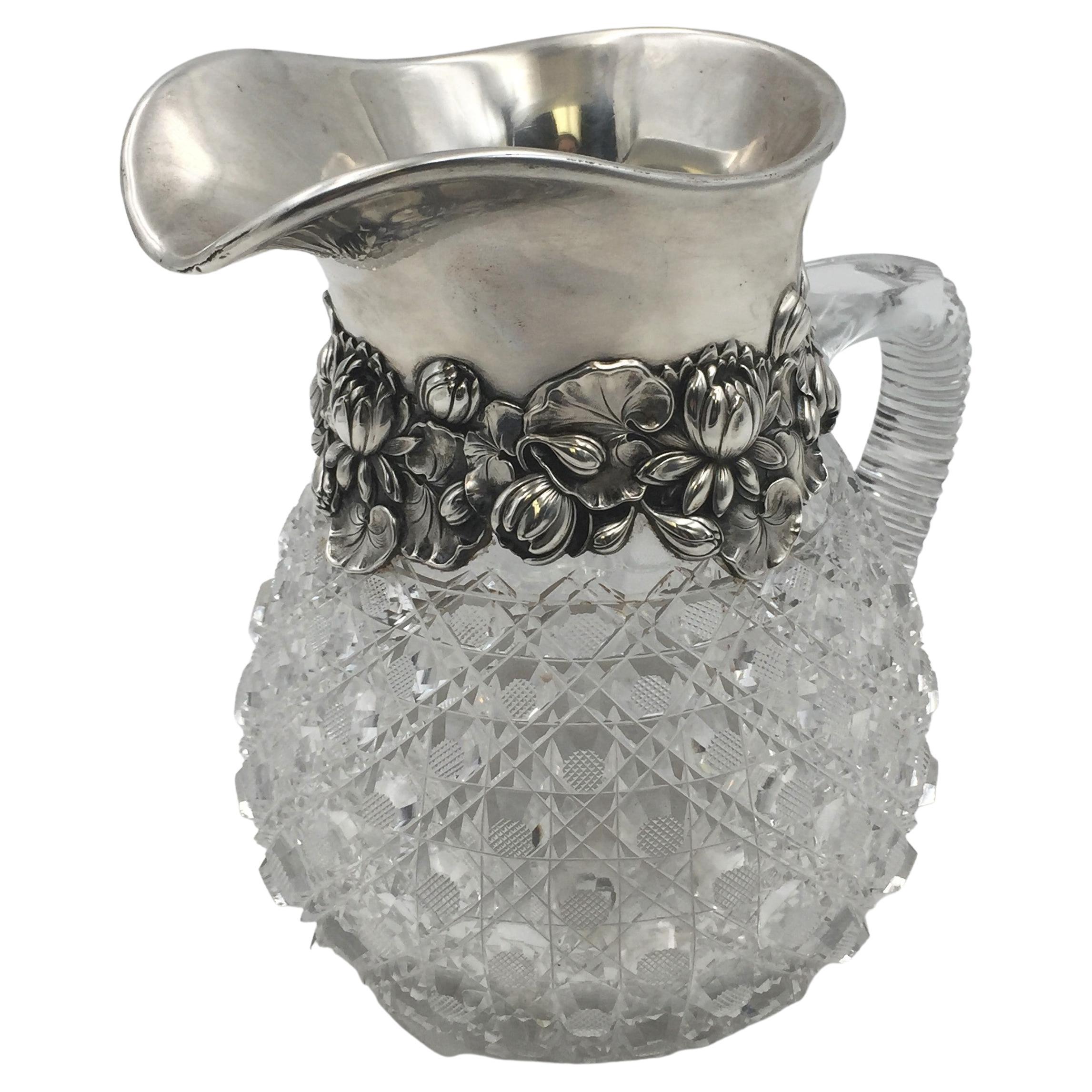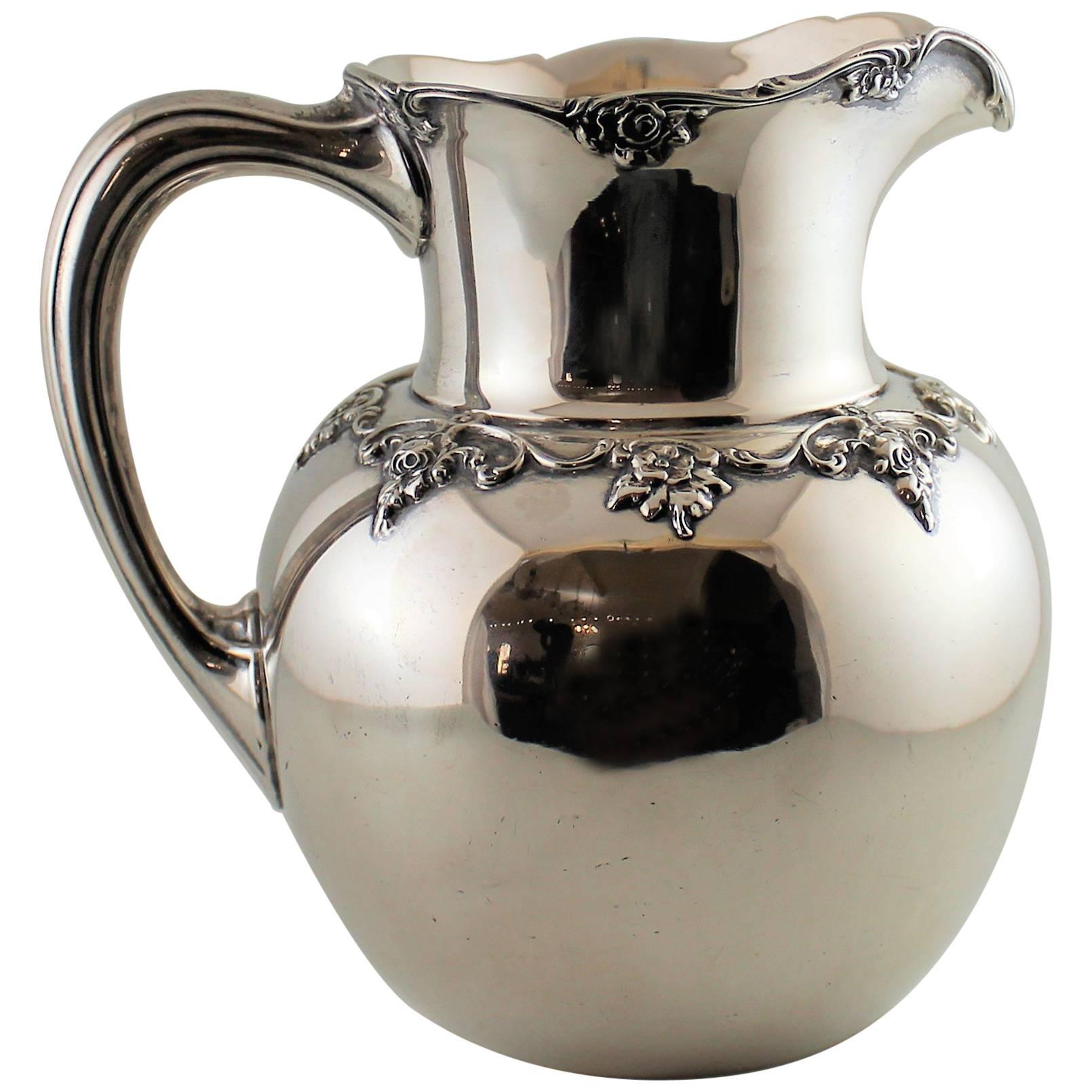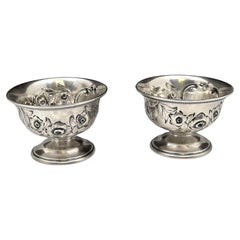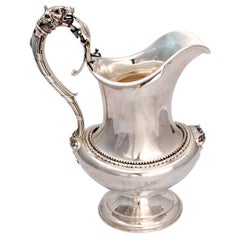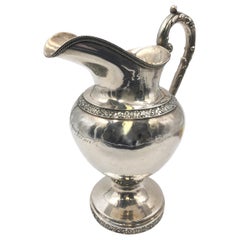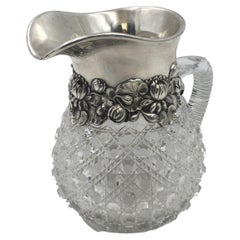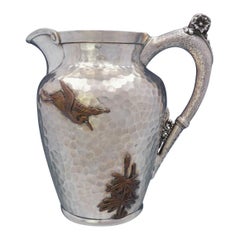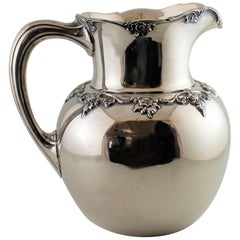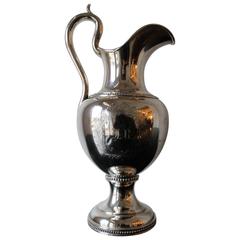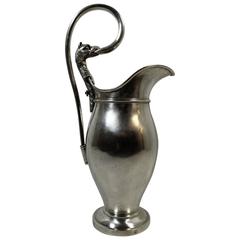Items Similar to Gorham Coin Silver Pitcher Ewer from 1850s
Want more images or videos?
Request additional images or videos from the seller
1 of 7
Gorham Coin Silver Pitcher Ewer from 1850s
$2,450
£1,857.16
€2,168.42
CA$3,431.75
A$3,863.04
CHF 2,043.99
MX$47,916.26
NOK 25,252.01
SEK 24,151.31
DKK 16,177.53
Shipping
Retrieving quote...The 1stDibs Promise:
Authenticity Guarantee,
Money-Back Guarantee,
24-Hour Cancellation
About the Item
Coin silver pitcher / ewer from mid- to late 1850s by Gorham, retailed by Crosby, Hubbard, & Morse in Boston, measuring 11 1/2'' in height and 7 3/4'' from handle to spout and weighing 37.4 ozt. Handle has exquisite applied decoration, including beads, and there is a inscription to Mary Baldwin Irwin in the front which is inserted in engraved floral and geometric patterns.
During the heyday of American silver manufacturing, approximately 1850–1940, Gorham was highly influential. The White House has used Gorham silver services during many administrations. Mary Todd Lincoln purchased an impressive tea and flatware service for use in the White House in 1859. Mrs. Ulysses S. Grant asked Gorham to commemorate the country's one-hundredth anniversary with a spectacular Century Vase that contained over 2,000 oz (57,000 g) of sterling silver, and in 1899, it produced a grand "loving cup" composed of 70,000 dimes was designed for Admiral George Dewey. Colonel Henry Jewett Furber placed the largest single commission Gorham ever received for what became known as the famous Furber service. The opulent 740-piece service represents Victorian era dining at its most elaborate. The monumental silver and parcel-gilt "Neptune" epergne made for Furber as part of this service was displayed at the Philadelphia Centennial Exposition in 1876. Gorham artisans also sculpted the famous monument of George Washington in the Capitol's Rotunda and the statue of Theodore Roosevelt in New York.
About the Seller
5.0
Vetted Professional Seller
Every seller passes strict standards for authenticity and reliability
Established in 1929
1stDibs seller since 2021
127 sales on 1stDibs
Typical response time: 2 hours
- ShippingRetrieving quote...Shipping from: New York, NY
- Return Policy
Authenticity Guarantee
In the unlikely event there’s an issue with an item’s authenticity, contact us within 1 year for a full refund. DetailsMoney-Back Guarantee
If your item is not as described, is damaged in transit, or does not arrive, contact us within 7 days for a full refund. Details24-Hour Cancellation
You have a 24-hour grace period in which to reconsider your purchase, with no questions asked.Vetted Professional Sellers
Our world-class sellers must adhere to strict standards for service and quality, maintaining the integrity of our listings.Price-Match Guarantee
If you find that a seller listed the same item for a lower price elsewhere, we’ll match it.Trusted Global Delivery
Our best-in-class carrier network provides specialized shipping options worldwide, including custom delivery.More From This Seller
View AllGorham Coin Silver Pair of Open Salt Cellars from 1850s
By Gorham
Located in New York, NY
Pair of Gorham, coin silver open salt cellars, made circa 1855 to 1860, beautifully adorned with floral and cartouche motifs. They measure 2 1/2'' in diameter by 1 2/3'' in height, a...
Category
Antique 1850s American Sterling Silver
Materials
Silver
Bigelow Bros. & Kennard Coin Silver Water Pitcher Ewer
By Bigelow Kennard & Co.
Located in New York, NY
Bigelow Bros. & Kennard coin silver water pitcher depicting a dog with a warrior shield on the handle with two matching dog cartouches on the front end and back end of the water pitcher. Very fine heavy gage silver with fine beading around the belly of the pitcher. Measures 15 inches x 10 inches x 6 inches and weighs 51.4 ozt. Makes a great bar pitcher for any occasion. Bears a Victorian engraving...
Category
Antique Mid-19th Century American Pitchers
Materials
Silver
Bennett & Caldwell Coin Silver Pitcher, circa 1850
By J.E. Caldwell & Co.
Located in New York, NY
Coin silver hand hammered water pitcher circa 1850 by Philadelphia makers Bennett and Caldwell. Leaf motif along handle, leaf and floral design around body and base, intricate leaf a...
Category
Antique 1850s American Sterling Silver
Materials
Silver
Gorham Sterling Silver and Glass Pitcher Vase in Art Nouveau Style
By Gorham
Located in New York, NY
Early 20th century, Gorham sterling silver and cut glass pitcher or vase in Art Nouveau style with applied, dimensional peonies and stylized leaves around the body. It measures 8'' i...
Category
Early 20th Century American Art Nouveau Sterling Silver
Materials
Silver, Sterling Silver
Eoff&Shepard for Ball, Black Coin Silver Pitcher from 1850s with Natural Motifs
By Eoff & Shepard, Ball, Black & Company
Located in New York, NY
Eoff & Shepard for Ball, Black & Co, coin silver pitcher, made between 1852 and 1861, beautifully adorned with raised natural motifs on the spout and handle. It measures 11 1/2'' in ...
Category
Antique Mid-19th Century American Pitchers
Materials
Silver
J.E. Caldwell & Co. Sterling Silver Bar Pitcher
By J.E. Caldwell & Co.
Located in New York, NY
J. E. Caldwell & Co. sterling silver bar pitcher, measuring 7.7 inches in height and 8.3 inches from handle to spout, and weighing 22.5 troy ounces,...
Category
20th Century American Sterling Silver
Materials
Silver, Sterling Silver
You May Also Like
Aesthetic Mixed Metals Gorham Sterling Silver Water Pitcher Applied Bird
By Gorham
Located in Big Bend, WI
Gorham
Museum quality mixed metals Gorham sterling silver water pitcher #740. It is adorned with applied copper elements includ...
Category
Antique 19th Century Pitchers
Materials
Sterling Silver
Gorham Sterling Silver Pitcher or Jug
By Gorham Manufacturing Company
Located in Hamilton, Ontario
Gorham sterling silver pitcher or jug.
Category
Early 20th Century American Sterling Silver
Materials
Sterling Silver
Newell Harding & Co. of Boston Massachusetts Coin Silver Presentation Pitcher
By Newell Harding & Co.
Located in Hamilton, Ontario
19th century American coin silver presentation pitcher made by Newell Harding & Co silversmiths of Boston Massachusetts and presented to the first president of the St. Andrews Society of Portland in 1861. It bears an engraving of the Scottish Royal...
Category
Antique 19th Century American Sterling Silver
Materials
Silver
Austro-Hungarian Silver Wine Ewer
Located in Hamilton, Ontario
Austro-Hungarian silver wine ewer.
Category
Antique 19th Century European Sterling Silver
$1,595 Sale Price
36% Off
Pair of Victorian English Silver Ewers
Located in New York, NY
Marked: London, 1859, Maker: John S. Hunt.
Category
Antique 1850s English Pitchers
Materials
Silver
Sterling Silver Water Pitcher
By Gorham Manufacturing Company
Located in Brooklyn, NY
Oval shaped with delicate etching around the top and middle of the pitcher. Notice the elegant shape of the handle and the indentations throughout the body. This piece is sure to cat...
Category
Antique Early 1900s American Sterling Silver
Materials
Sterling Silver

